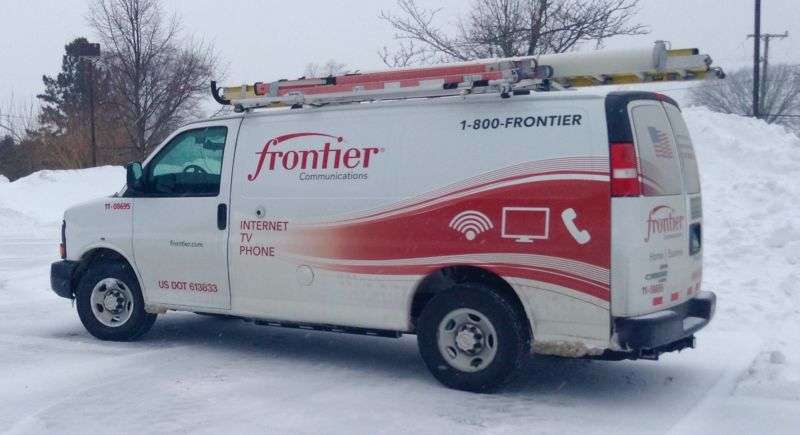
Frontier, an ISP in 29 states, plans to file for bankruptcy

Frontier Communications is planning to file for bankruptcy within two months, Bloomberg reported last week.
The telco “is asking creditors to help craft a turnaround deal that includes filing for bankruptcy by the middle of March, according to people with knowledge of the matter,” Bloomberg wrote.
Frontier CEO Bernie Han and other company executives “met with creditors and advisers Thursday and told them the company wants to negotiate a pre-packaged agreement before $356 million of debt payments come due March 15,” the report said. The move would likely involve Chapter 11 bankruptcy to let Frontier “keep operating without interruption of telephone and broadband service to its customers.”
Frontier reported having $16.3 billion in long-term debt as of September 30, 2019.
We contacted Frontier about the report of its bankruptcy plan and will update this story if we get a response.
Frontier offers residential and business services in 29 states over its fiber and copper networks. Frontier offers broadband, TV, and phone services and reported revenue of $2 billion and a net loss of $345 million in the most recent quarter.
Frontier has been losing customers and reducing its staff. Its residential-customer base dropped from 4.15 million to 3.81 million in the 12-month period ending September 30, 2019, including a loss of 90,000 customers in the most recent quarter. Also in that 12-month period, Frontier’s business-customer base declined from 422,000 to 381,000.
Meanwhile, Frontier had 19,132 employees as of September 30, 2019, down from 21,375 one year earlier.
Frontier’s financial performance last year was so bad that it refused to take any questions from investors during its quarterly earnings call in August. Frontier is in the process of selling its operations in Washington, Oregon, Idaho, and Montana to WaveDivision Capital.
Many customer problems
Frontier’s decline is partly due to the decreasing relevance of its copper networks and its failure to properly maintain those old phone lines. But Frontier has also provided poor customer service on its modern fiber networks.
Subscribers suffered outages immediately after Frontier’s 2014 purchase of AT&T’s wireline network in Connecticut and Frontier’s 2016 purchase of Verizon’s FiOS and DSL networks in California, Florida, and Texas.
Frontier Communications failed to properly maintain its telecom network in Minnesota, leading to “frequent and lengthy” phone and Internet outages, an investigation by the state Commerce Department found in January 2019. The investigation led to a settlement. New York state officials are also investigating Frontier over its repeated outages and long repair times.
Many Frontier customers in different states have been hit with giant overcharges and cancellation fees, or draconian policies like one requiring customers to pay for router rentals even when they have purchased their own router. (A new US law scheduled to take effect in June 2020 would ban that practice.)
Windstream, a telco that offers service in 18 states, filed for bankruptcy in February 2019. Windstream in November 2019 said its latest quarterly revenue was “$1.27 billion compared to $1.38 billion in the same period a year ago.”




